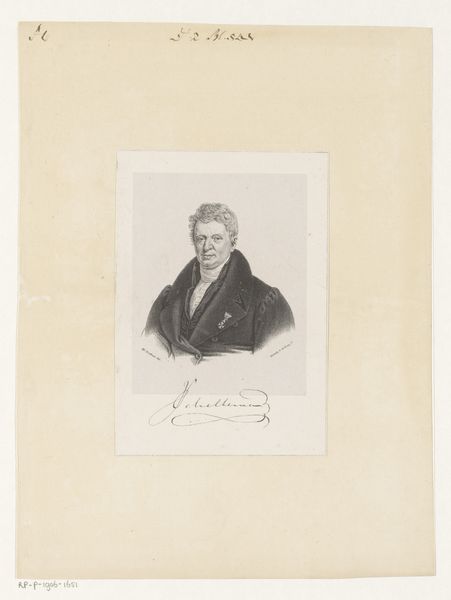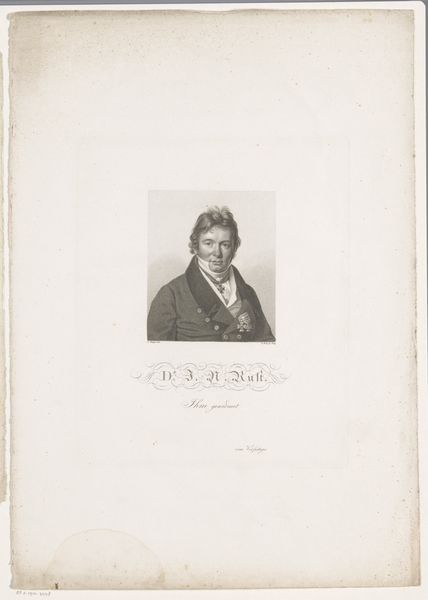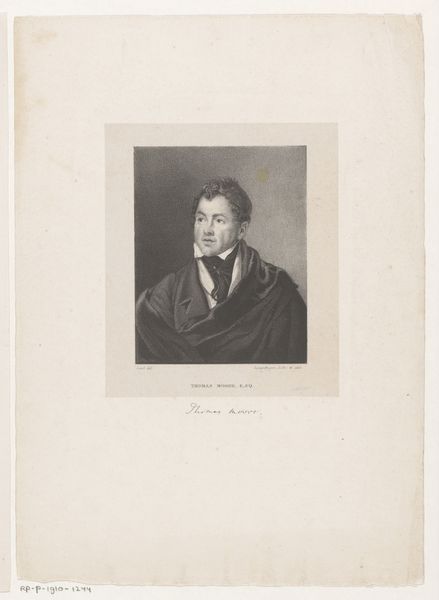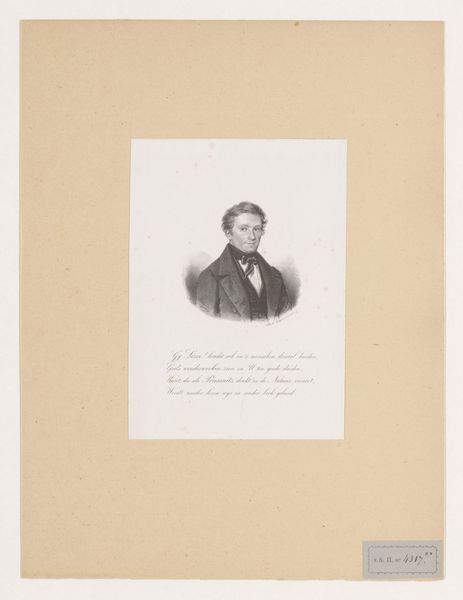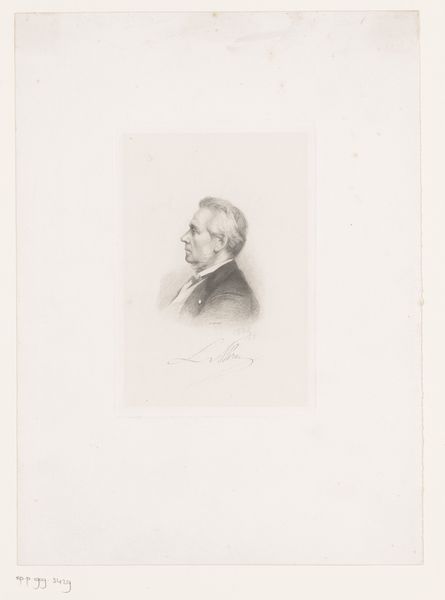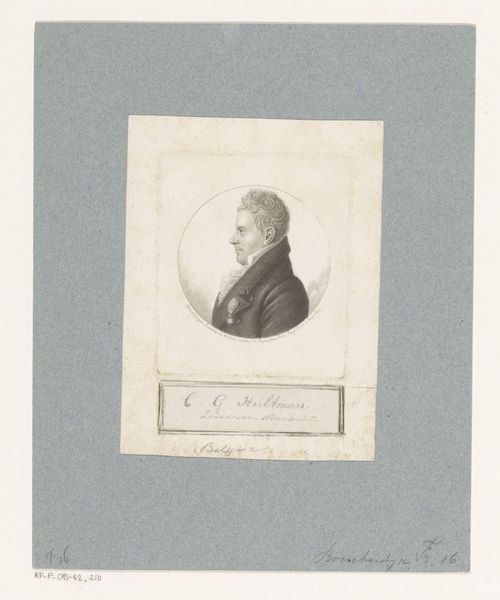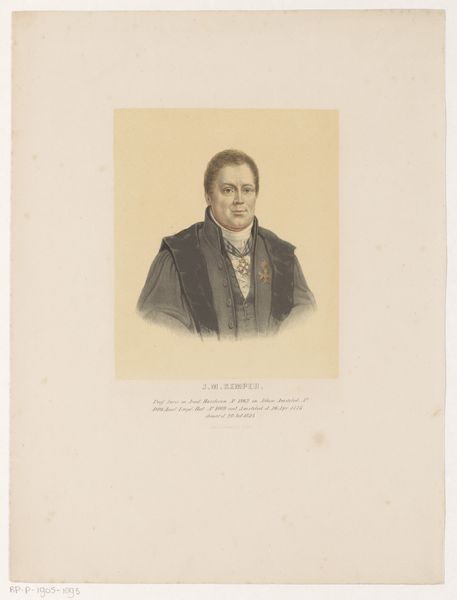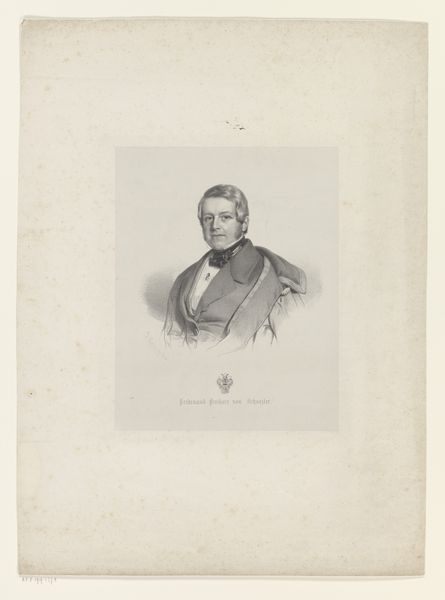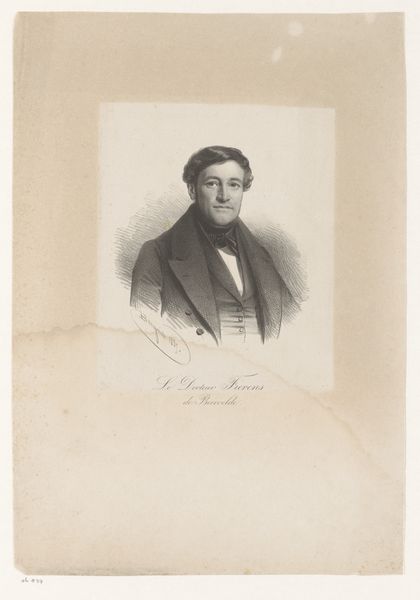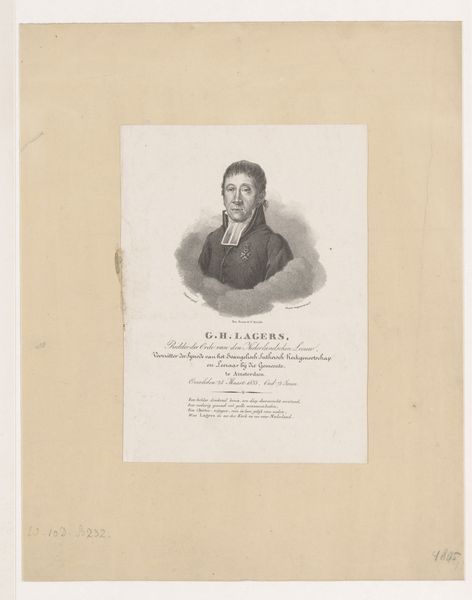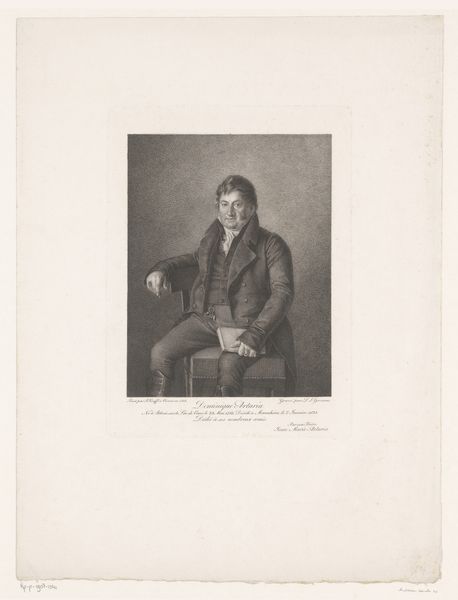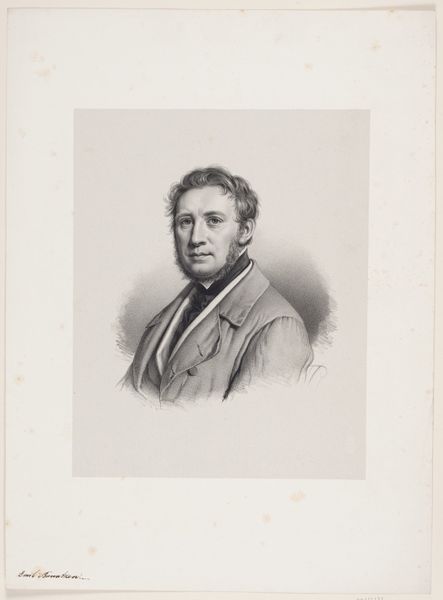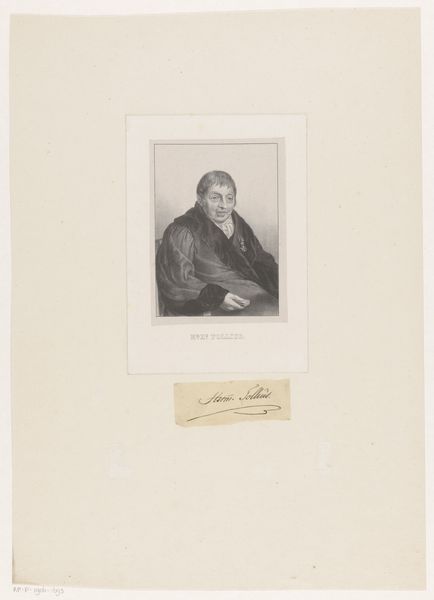
#
photo of handprinted image
#
picture layout
#
light pencil work
#
photo restoration
#
photo element
#
expressing emotion
#
light coloured
#
portrait drawing
#
tonal art
#
remaining negative space
Dimensions: height 206 mm, width 156 mm, height 331 mm, width 263 mm
Copyright: Rijks Museum: Open Domain
Editor: Here we have Christiaan Julius Lodewijk Portman's "Portrait of Jacobus Scheltema" from 1835, housed at the Rijksmuseum. It looks like some kind of print, maybe an engraving. It has an almost photographic quality in the details. What stands out to you? Curator: What strikes me is the labor invested in its production. Consider the engraver, meticulously translating likeness into a reproducible format. It isn't simply about replicating an image; it’s about control over disseminating that image. Who was meant to consume this image, and what does the reproducible nature say about accessibility and portraiture at this time? Editor: So you're thinking about the social context and how this kind of portrait was made available at the time? Was it common to have engraved portraits? Curator: Precisely. It forces us to consider who had access to art, or images more generally, beyond painted portraiture enjoyed by the wealthy elite. What impact would widespread images, compared to single handmade objects, have on individual subjectivity or cultural imagination? Furthermore, thinking about the economics of printmaking: who financed it? Who benefited from its circulation? The quality suggests it was for more than just common consumption, and may have instead catered towards an aspiring professional class. Editor: I never considered that the *making* of art, especially reproductive art, reflects access and social power. So it is more about material culture and process than about some aesthetic sensibility? Curator: It's about both! But you're right, this approach foregrounds materiality. Understanding production shapes our perception of its artistic merit and its role within the broader social fabric. What about you? Has your impression changed? Editor: It has! I'm much more curious about the printmaking process and the hands involved in creating it. I didn’t realize an image could have such complex social roots.
Comments
No comments
Be the first to comment and join the conversation on the ultimate creative platform.
